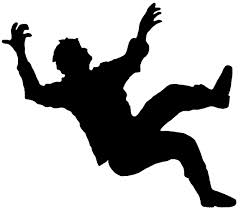 Birthdays are a leading cause of falls that can result in an emergency room visit, and every year this takes a particular toll on those 65 years of age and older. The 65+ year olds represent 2.5 million visits to the ER according to the CDC, and that makes them the most susceptible of any age group. Sadly, one in three of this 2.5 million will be back again within a year of their first visit having fallen again, some within days of the first fall.
Birthdays are a leading cause of falls that can result in an emergency room visit, and every year this takes a particular toll on those 65 years of age and older. The 65+ year olds represent 2.5 million visits to the ER according to the CDC, and that makes them the most susceptible of any age group. Sadly, one in three of this 2.5 million will be back again within a year of their first visit having fallen again, some within days of the first fall.
So, keep your older loved one in the safe confines of home, right? No … researchers report that a substantial percentage of these falls are trips, slips and stumbles right at home, the bathroom and kitchen being particularly dangerous fall hazards. As any physical medicine doctor can tell you, walking is actually controlled falling. We learn this skill at a very early age when we are all thankfully closer to the ground. If this isn’t clear, just watch an infant struggling for that first milestone step…a lot of falls precede the successful step.
As we age, we don’t forget how to walk safely, but older adults go through health and physical changes which challenge their agility and some medications are also culprits in this gravitational conspiracy. Here are some tips to help your older loved one to a safer gait:
- Make a specific appointment and go with them to visit their doctor: be sure to cover their medications for any side effects, talk about any history of falls and explore whether any health conditions may be potential contributors.
- Encourage a daily regimen that includes more than just walking – perhaps a physical therapy regimen or yoga or strength training, because strength and changing up the training – what some refer to as “muscle confusion” – is good for agility.
- Outfit the feet: “sensible shoes” may be a dirty word in fashion circles, but help your older loved one to have properly fitted, effective footwear with soles that have traction – avoid high heels, floppy shoes, bunny slippers, etc.
- Conduct a home safety inspection to declutter, eliminate trip hazards, upgrade poor lighting, and make home more accessible with everyday items within easy reach. Remember, baths and kitchens are particularly hazardous places.
- Be sure your older loved one’s house is well-lit, and this goes for middle of the night trips to a rest room or early morning risings during this season of short daylight. Encourage a flashlight at bed side.
- Upgrade home safety with hand rails on all stairs or even longer hallways, non-slip treads on stairs, adaptive toilet seats and grab bars in the bath.
- There are professionals who can help – physical therapists can help with a “workout and flexibility regimen,” and your local senior ombudsman also can recommend area craftspeople who can make home accommodate your older loved one.
So, when you visit your older loved one during the holidays take along a pad of paper or your smartphone to make a list. This is not the naughty and nice list; it’s the safe and non-safe list! I have a home safety checklist I will be happy to send you if you just email me.
Charlotte Bishop is an Aging Life Care Advisor, Geriatric Care Manager and founder of Creative Care Management, certified professionals who are geriatric advocates, resources, counselors and friends to older adults and their families in metropolitan Chicago. She also is the co-author of How Do I Know You? A Caregiver’s Lifesaver for Dealing with Dementia.





